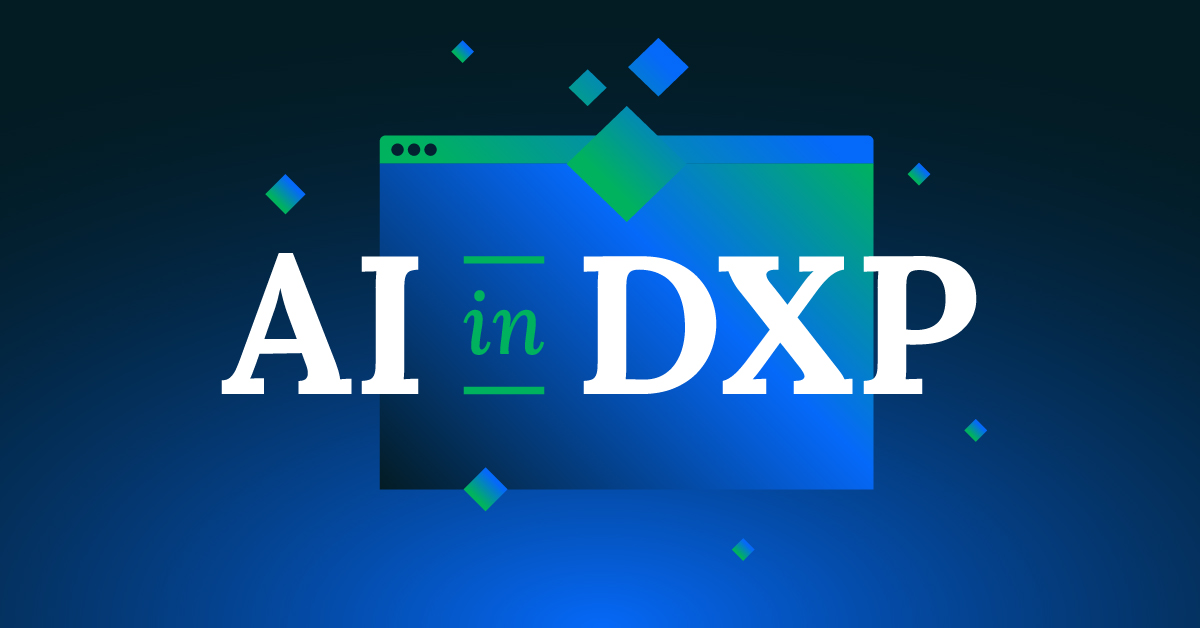- März 19, 2025
- --
KI Vorhersagen 2025: Wichtige KI-Strategien für Versicherungs-CIOs
Magnolia in Aktion
Unser Expertenteam zeigt Ihnen live, was Magnolia für Sie leisten kann.
Jetzt Demo buchenKI wird im Jahr 2025 eine entscheidende Rolle für den Erfolg von Versicherungsunternehmen in ihrer wettbewerbsintensiven Branche spielen. Doch die Implementierung und Verwaltung von KI-Tools kann die CIOs von Versicherungsunternehmen vor große Herausforderungen stellen.
Einem aktuellen Gartner-Bericht zufolge werden CIOs in der Versicherungsbranche bis 2029 30 % ihrer Zeit mit der Verwaltung maschineller Mitarbeiter verbringen. Gleichzeitig werden ihre technischen Schulden wachsen - viermal schneller als herkömmliche technische Schulden.
Dennoch werden die CIOs unter Druck stehen, etwas zu leisten: Die erfolgreiche Einführung von KI wird für diese Führungskräfte ein wichtiger Leistungsmaßstab sein.
Wie kann Ihr Team diese Hindernisse überwinden und das Beste aus der KI herausholen, um sich von der Konkurrenz abzuheben? Im Gartner-Bericht wird erörtert, dass traditionelles strategisches Denken in Frage gestellt und unkonventionellere Strategien angewandt werden sollten.
Verschmelzung von KI und Unternehmensstrategien
Führende Vertreter der Versicherungsbranche sehen in der KI eine bahnbrechende Technologie - und viele CIOs investieren erheblich in KI-Tools. Sie erweitern ihre KI-Implementierungen über die traditionelle Datenwissenschaft hinaus auf Anwendungsfälle, die die Effizienz und Produktivität steigern und die Kundenerfahrung verbessern können.
Allerdings haben nur relativ wenige Unternehmen eine kohärente Strategie für KI entwickelt oder die KI-Planung in die Geschäftsstrategien integriert. Die Zusammenführung von KI und Geschäftsstrategien mag unkonventionell sein, ist aber entscheidend. Wie der Gartner-Bericht feststellt, wird KI "nicht mehr als 'Gewinnertechnologie' betrachtet, sondern als Schlüssel zum Geschäftserfolg." Solange Unternehmen KI und Geschäftsstrategien nicht zusammenbringen, werden sie nicht in der Lage sein, den vollen Wert von KI auszuschöpfen.
Prozesse mit maschinellen "Mitarbeitern" neu erfinden
Im Zuge der Integration von KI und Geschäftsstrategien müssen die CIOs von Versicherungsunternehmen auch die Art und Weise überdenken, wie sie ihre Teams verwalten. Die Verfügbarkeit neuer generativer KI-Tools (GenAI) beschleunigt den laufenden Übergang von manuellen, menschenorientierten Prozessen zu maschinengestützter Automatisierung. Von der Schadenbearbeitung über die Betrugserkennung bis hin zum IT-Management steigern KI-Tools die Geschwindigkeit und Effizienz vieler wichtiger Aufgaben.
Für CIOs erfordern diese Veränderungen jedoch eine Umstellung des Personalmanagements. "Ob im operativen Geschäft oder in den IT-Abteilungen, CIOs werden feststellen, dass ein zunehmender Anteil ihrer Belegschaft aus Maschinen besteht", heißt es in dem Gartner-Bericht. "Dies wird eine Anpassung ihrer Arbeitsweise erfordern.
CIOs müssen einen Rahmen für die Verwaltung und Steuerung ihrer digitalen Mitarbeiter schaffen. Darüber hinaus müssen sie sich mit den Auswirkungen der personellen Veränderungen auf ihre Unternehmenskultur auseinandersetzen.
KI Vorhersagen 2025: 5 Unconventional Strategies Insurance CIOs Can Adopt
To start building your strategy for deploying transformative AI technologies, read the Gartner report, “5 Unconventional Strategies Insurance CIOs Can Adopt.”
Die technische Verschuldung durch KI-Implementierungen begrenzen
Während die Versicherer um die Nutzung von KI ringen, könnte die schnelle Implementierung neuer KI-Tools zu erheblichen technischen Schulden führen. Die Aufgaben, die beispielsweise für die kontinuierliche Verfeinerung von KI-Modellen oder die Integration von KI-Tools in Altsysteme erforderlich sind, könnten sich schnell auftürmen - und andere Wartungsaufgaben könnten vernachlässigt werden. In der Zwischenzeit werden die Kosten für die Wartung von KI-Systemen steigen, und viele Teams werden gezwungen sein, Budgets von anderen Initiativen umzuverteilen.
Um die technischen Schulden und die damit verbundenen Kosten in den Griff zu bekommen, müssen die CIOs von Versicherungsunternehmen eine ganzheitliche Strategie für technische Schulden entwickeln, die KI-Systeme neben den traditionellen Kernsystemen einschließt. Einer der Schlüssel zu dieser Strategie ist die Prüfung aktueller KI-Implementierungen und die anschließende Priorisierung von Bereichen mit technischen Schulden, um die Ressourcenzuweisung zu optimieren.
KPIs neu definieren und erreichen
All diese neuen, KI-bezogenen Aufgaben werden zu einem zentralen Bestandteil der CIO-Aufgaben werden. Laut Gartner wird bis 2027 für mehr als ein Drittel der CIOs von Versicherungsunternehmen die Einführung neuer Technologien ein wichtiger Leistungsindikator (KPI) sein. In dem Bericht heißt es: "Versicherer werden zunehmend erkennen, dass der geschäftliche Wandel durch technologische und datenbezogene Fortschritte und nicht durch reine Geschäftsideen vorangetrieben wird." In dem Maße, in dem IT-Teams ihren Schwerpunkt von der Wartung von Altsystemen auf Innovation und Geschäftswachstum verlagern, werden CIOs dafür verantwortlich gemacht werden, den Weg mit neuen Technologien zu ebnen.Die starke Konzentration auf die neu entstehenden KI-Technologien von heute bedeutet nicht, dass die Lösungen von gestern aufgegeben werden müssen. Die Analysten von Gartner schlagen vor, dass die CIOs von Versicherungen auch die Ausgaben für öffentliche Clouds neu bewerten sollten, die unerwartet steigen könnten, da die Versicherer mit ihren Kernsystemen an bestimmte Cloud-Services gebunden sind.
Die starke Konzentration auf die neu entstehenden KI-Technologien von heute bedeutet nicht, dass die Lösungen von gestern aufgegeben werden müssen. Die Analysten von Gartner schlagen vor, dass die CIOs von Versicherungen auch die Ausgaben für öffentliche Clouds neu bewerten sollten, die unerwartet steigen könnten, da die Versicherer mit ihren Kernsystemen an bestimmte Cloud-Services gebunden sind.
Vorwärtskommen und kontinuierliche Optimierung
Die starke Konzentration auf die neu entstehenden KI-Technologien von heute bedeutet nicht, dass die Lösungen von gestern aufgegeben werden müssen. Die Analysten von Gartner schlagen vor, dass die CIOs von Versicherungen auch die Ausgaben für öffentliche Clouds neu bewerten sollten, die unerwartet steigen könnten, da die Versicherer mit ihren Kernsystemen an bestimmte Cloud-Services gebunden sind.
Dennoch wird der Erfolg von KI-Implementierungen eine Änderung der traditionellen Prioritäten und Ziele erfordern. Wie der Gartner-Bericht feststellt, sind "CIO-Entscheidungen, die sich an konventionellen Weisheiten orientieren, unzureichend". Um den Wert von KI für die Wettbewerbsdifferenzierung zu maximieren, müssen die CIOs von Versicherungsunternehmen differenziert denken.
Möchten Sie mehr erfahren?
Lesen Sie den Gartner-Bericht"5 Unconventional Strategies Insurance CIOs Can Adopt" (5 unkonventionelle Strategien, die Versicherungs-CIOs anwenden können), um Ihre Strategie für den Einsatz von transformativen KI-Technologien zu entwickeln.
Haftungsausschluss
Gartner befürwortet keine Anbieter, Produkte oder Dienstleistungen, die in seinen Forschungspublikationen dargestellt werden, und rät Technologieanwendern nicht, nur die Anbieter mit den höchsten Bewertungen oder anderen Bezeichnungen auszuwählen. Die Forschungspublikationen von Gartner geben die Meinung der Forschungsorganisation von Gartner wieder und sollten nicht als Tatsachenbehauptungen ausgelegt werden. Gartner lehnt jede ausdrückliche oder stillschweigende Gewährleistung in Bezug auf diese Studie ab, einschließlich jeglicher Gewährleistung der Marktgängigkeit oder Eignung für einen bestimmten Zweck.
Gartner ist eine eingetragene Marke und Dienstleistungsmarke und Magic Quadrant ist eine eingetragene Marke von Gartner, Inc. und/oder seinen Tochtergesellschaften in den USA und international und wird hier mit Genehmigung verwendet. Alle Rechte vorbehalten.
Gartner is a registered trademark and service mark and Magic Quadrant is a registered trademark of Gartner, Inc. and/or its affiliates in the U.S. and internationally and are used herein with permission. All rights reserved.












